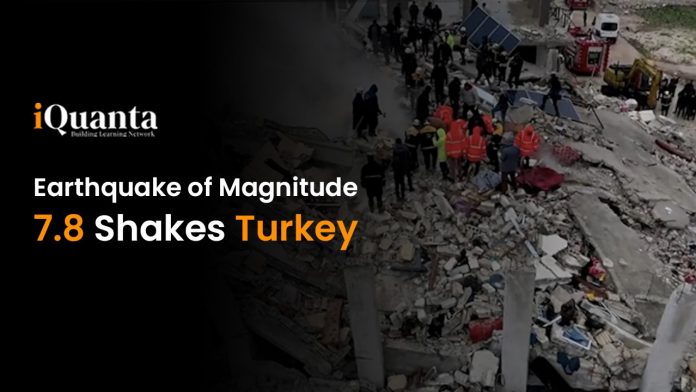Tremors in Turkey : Tectonic Plate Movement
Turkey has been in the news since forever we can remember – be it for Kurdistan crisis , Syrian refugee problem or for controversial statements about the founding father of the nation with the red crecent moon sprangled banner – Kamal Ataturk. However , on 7thFeb the world’s newsfeed started getting spammed with hashtags #prayforTurkey, #HelpforGhaziantep – as it faced what the president called “ the worst disaster in past 100 years “ – when massive earthquakes of magnitude 7.8 originating eleven miles beneath the surface of southern Turkish town Ghaziantep shook the nation – crumbling buildings and leaving a pile of debris in a span of merely 7 minutes. However , there was not a respite as the afterwaves of magnitude 7.5 hit the southern town once more with about 985 mini shockwaves shook the nation to its core. Not only Turkey , the northern border towns of Syria – likely Sanliurfa also bore the brunt of the earthquake as death toll rose to almost 9700 in a single day.
The US geological survey and expert seismologists point out something called “ Strike-Slip “ movement of the tectonic plates along fault lines.
What is a “Strike Slip Movement”
Fault lines : In geology, a fault is a planar fracture or discontinuity in a volume of rock across which there has been significant displacement as a result of rock-mass movements. In other words fault is a crack that exists between continental and subcontinental plates that float on the magma of the earth. Often these plates strike with each other or slip below or above on another – creating massive vibrational motions on the earth crust termed as earthquakes – and the motion of the continental plates is termed as plate tectonic movement.
Turkey particularly lies in a vulnerable zone known as the Eastern Anatolian Fault Line – a junction between the Arabian , European and the Asian subcontinental plate– so it is always associated with aftershocks – as it causes a domino effect with one movement. Experts opine that the tremors that originated were mainly because of a strike slip movement between the Arabian and the European plates. Secondary waves are originating because the tension stored are not yet released and will continue to release in the bursts – as the capital Ankara and Syrian capital Damascus and cities like Mosul still are experiencing aftershocks scaling 6.0 – 6.3 in the Richter Scale.
Declaration of National Emergency
Turkey president Recep Erdogan has always been a controversial global figure – and a national hero in Turkey. On his solidarity with the citizens of Ghaziantep – he immediately launched a search and rescue operation mobilizing Turkey’s NDRF , Air Force and Army – declaring it as a national emergency. As snowstorms continue to worsen the situation – its Erdogan’s efforts that has kindled a ray of hope among citizens. Politically , experts think this also consolidates his position as president for another term. Another factor that favors this result is the fact that he has continued to maintain Turkey’s position as an crucial asset to both side during the Russo-Ukrainian crisis.
Outcome
Although unfortunate , it has opened a new side to the crisis. As foreign aid has continued to pour in from various parts of the world to Turkey – Syria has largely been struggling to fetch the same – mainly due to the ISIS activity in the desert nation. Foreign affairs expert hope that this might serve as an eye opener to the Syrian Government to reconsider their policy against the looming militant issue and implement stricter measures to curb the problem as an indirect effect of this crisis.

